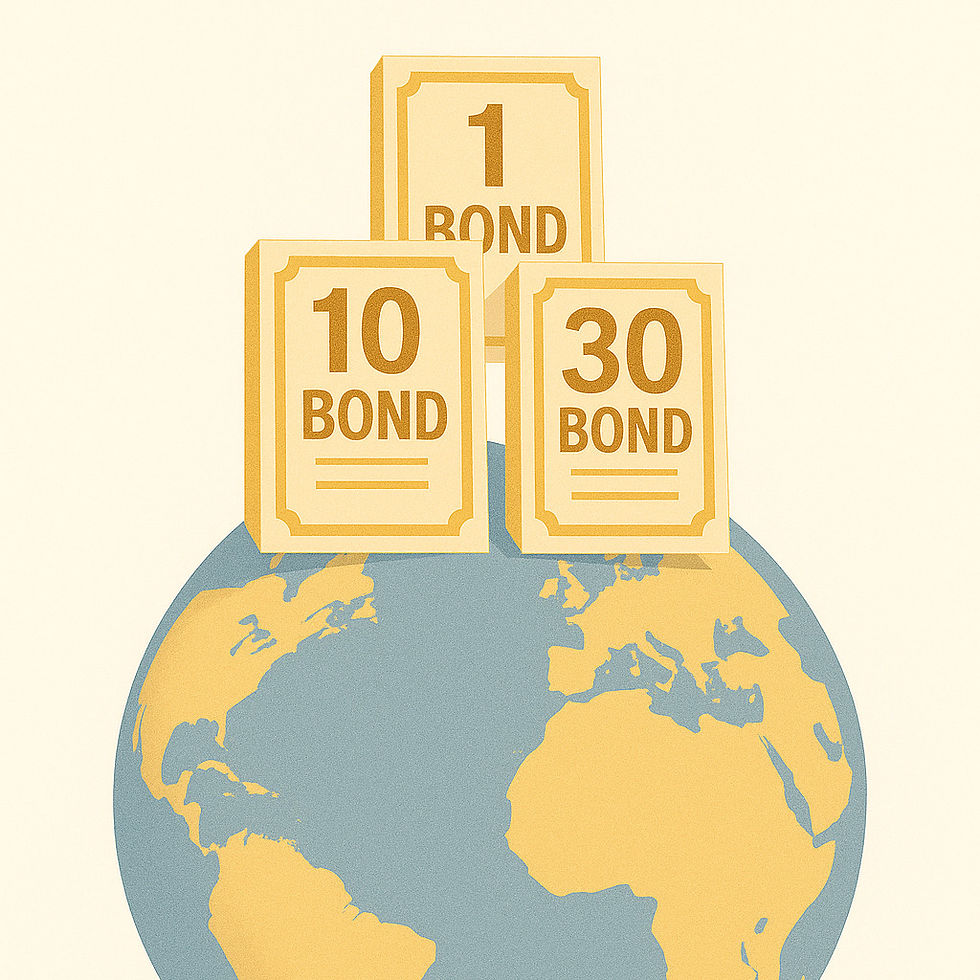The dollar is back on the rise: rates are falling, but expectations are already priced in.
- rizziandrea4
- Oct 10
- 2 min read
Updated: Oct 11
Between September 17 and early October 2025 , the dollar regained strength after months of weakening. The DXY index, which measures the greenback's value against major world currencies, rose from 96.2 points to 99.5 , an increase of about 3.4% in three weeks. This sharp movement occurred just as the Federal Reserve began its rate cuts . An apparent contradiction? Only superficially.
A planned cut, and already "priced"
The Fed did indeed lower the cost of money, but it didn't surprise anyone: traders had already sold dollars in the previous months , anticipating the decision and discounting it in prices. When the move came, the market was already positioned as if it had happened. The result? No new wave of selling, but rather a partial rebalancing: with the "rate factor" already absorbed, the dollar found room to rise.
The Fed followed the market, not the other way around.
It's a subtle but crucial difference. At this stage, the central bank didn't impose a new direction; it simply validated what the market expected . Monetary policy expectations had been fully internalized by market participants, and by respecting them, the Fed eliminated uncertainty. Once the trajectory was clear, investors moved toward asset classes with still attractive real yields: first and foremost, the dollar.
The combined effect of the euro and the yen
Further driving the rebound was the weakness of the main competing currencies . The euro , weighed down by political uncertainties in France and signs of a slowdown in Germany, lost ground below the 1.17 level . The yen , however, remained under pressure despite the Bank of Japan having already raised the reference rate to 0.5% in 2025 , after years of ultra-expansionary monetary policy. Tokyo, however, maintains a prudent approach: yield curve control (YCC) and a slow pace of reducing government bond purchases limit the attractiveness of the Japanese currency against the dollar. Since the euro and the yen represent more than 70% of the DXY basket, their weakness amplified the greenback's recovery.
Flows and perception of safety
In times of monetary transition and moderate volatility, the dollar often returns to being perceived as a liquid and predictable haven . Many global investors, awaiting clearer signals from other developed economies, are bringing some of their capital back to the United States , driven by the combination of deep liquidity, institutional stability, and even higher real yields than in other areas.
A rise that comes from the advance
In short, the strengthening dollar does not negate the rate cut: it complements it. The movement is the consequence of a market that had already priced in the Fed's move and that, once the bearish pressure had dissipated, found new reasons to buy back the American currency.


